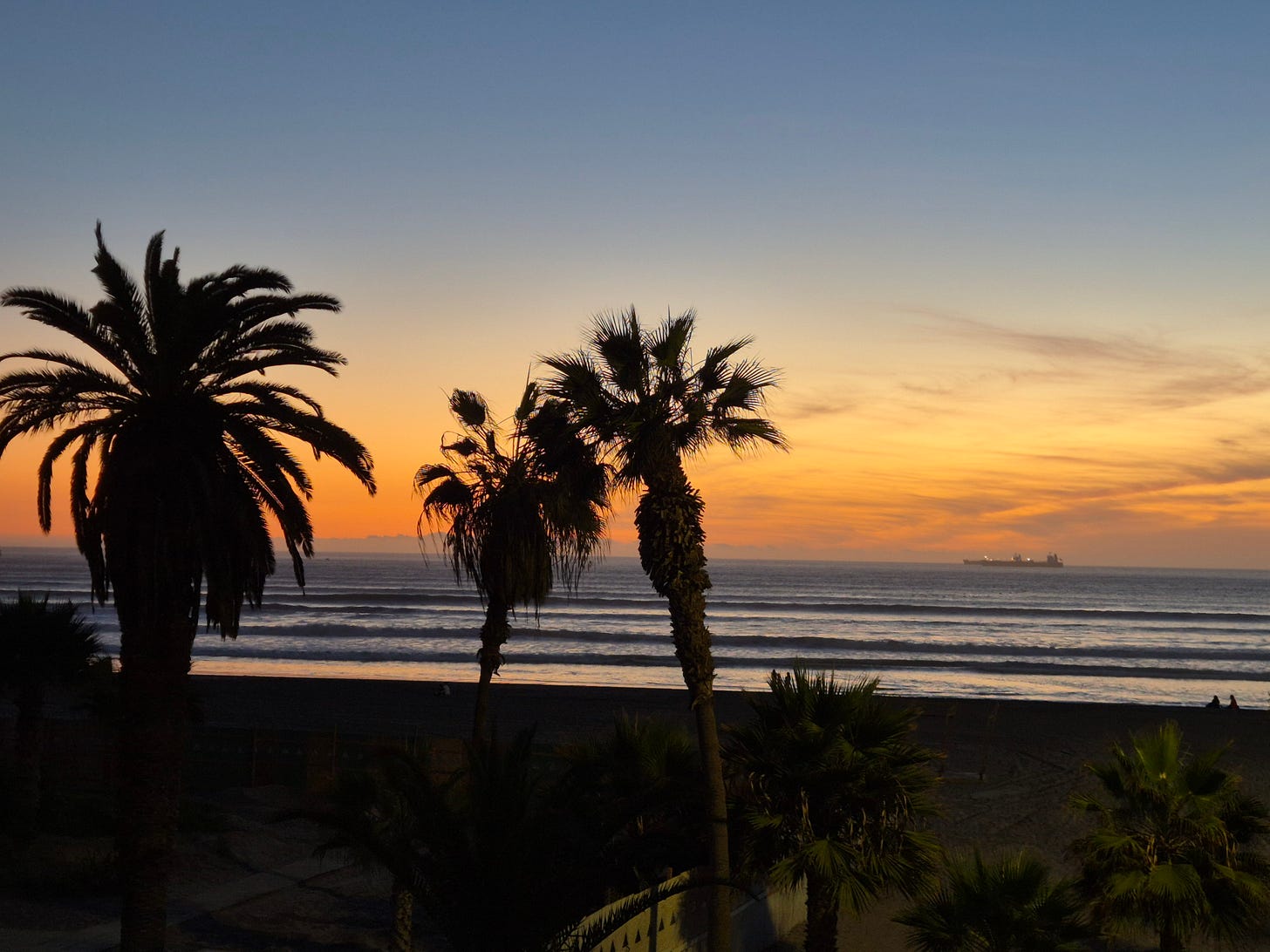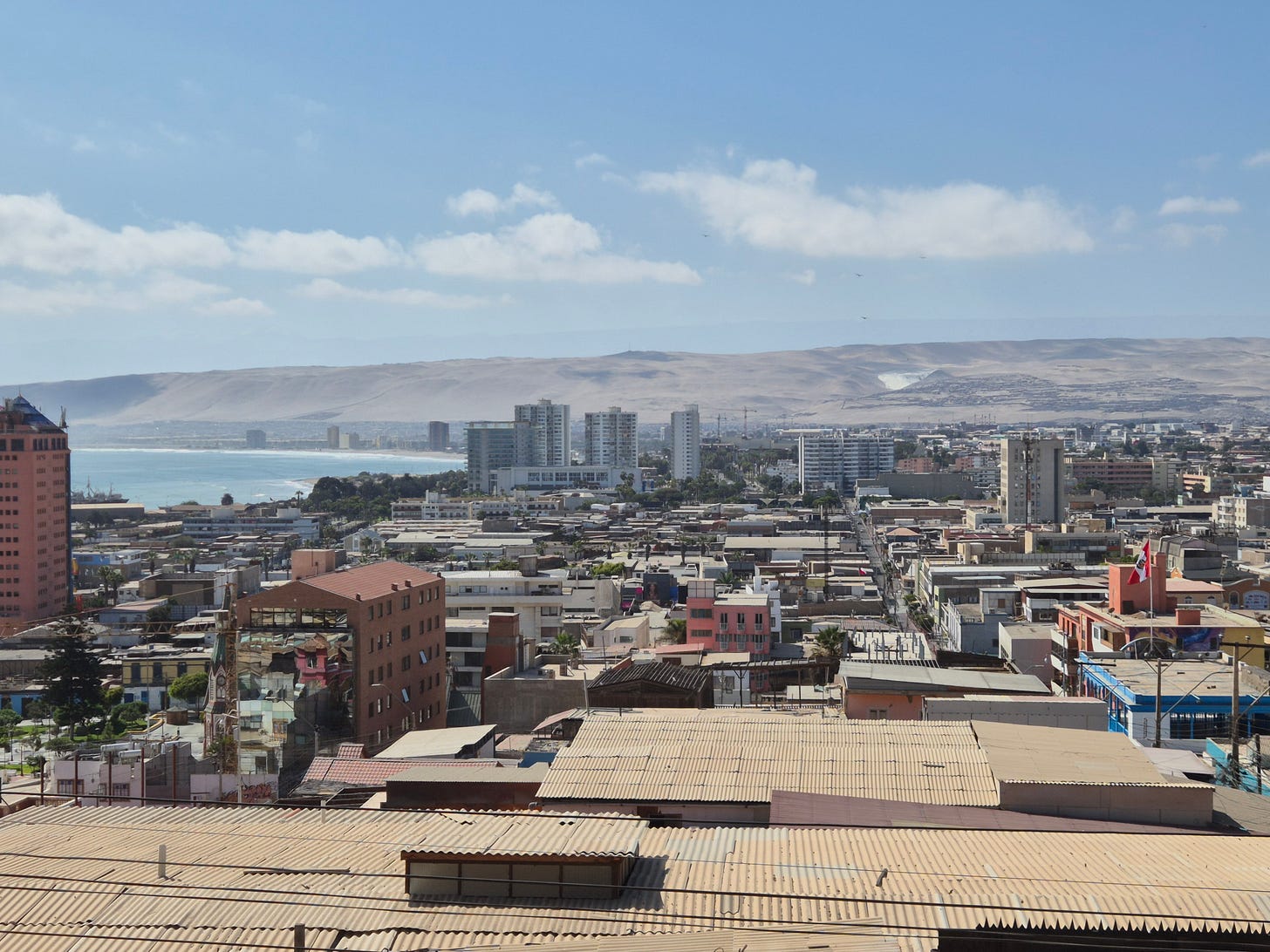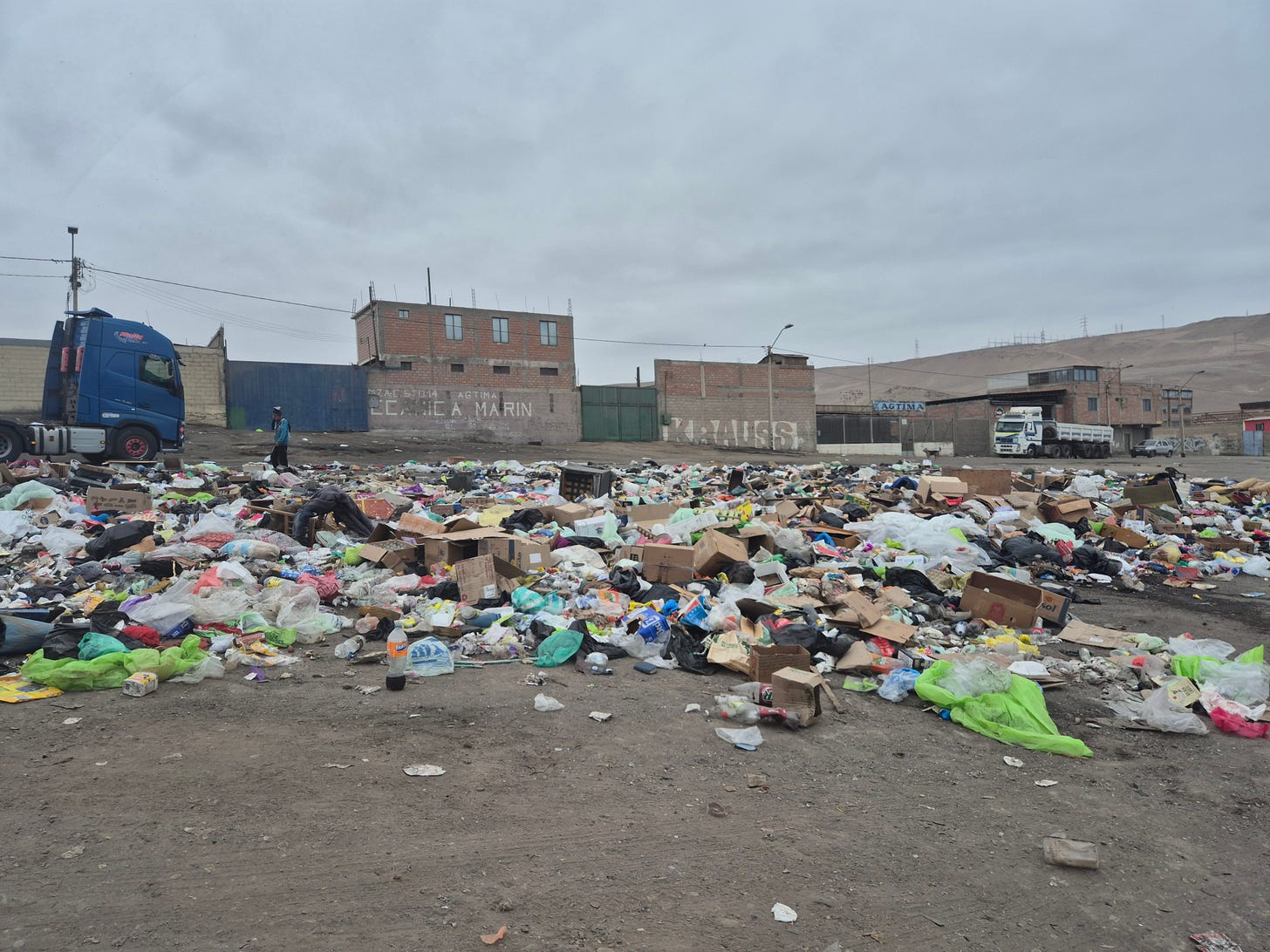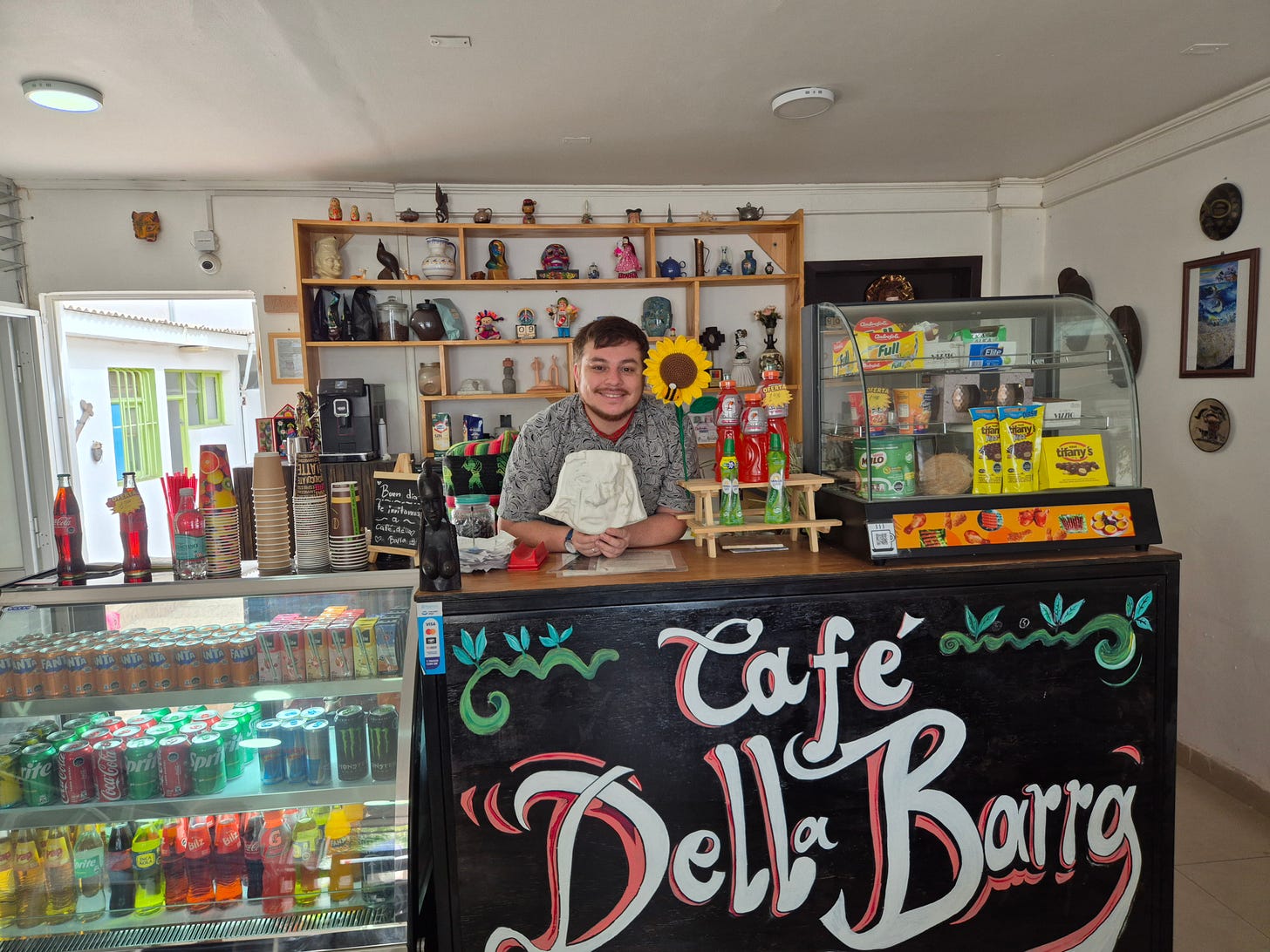At first sight, there is little trace of the desert in Arica. We arrived in Chile’s northernmost city at night. 1,700 kilometres from the capital, the climate was noticeably different. In Santiago the combination of smog and the mist that Chileans call the camanchaca hung low over the city, seeping into your bones and skin with a damp penetrating cold that was neither fully winter nor autumn. There were consolations: the company of our friends; our last day in the city, when the rain and overcast gloom gave way to a rich warm sun that dried out the wet streets and revealed the majestic white wall of the cordillera that flanks Santiago running parallel to the Pacific.
But even without seeing it, Arica immediately felt different. Driving from the airport along the immaculately-paved road, the air felt drier and warm enough for t-shirts. The taxi driver chatted about children, Sheffield United and the ancient Chinchorro mummies that constitute Arica’s greatest attraction. He spoke with pride and a sense of ownership, with the certainty that there was no other reason why anyone could come all the way from England to this distant port-city, only ten kilometres from the Peruvian border, except to look at corpses.
That night we could see the Pacific from our hotel window, eleven floors up, but all we could hear was the thumping of music from a nightclub down below, that required ear plugs to ensure sleep. The next morning we woke up from ragged disco dreams and gazed down upon our desert home. On the beach to our right, young men and women played volleyball amongst the palm trees, while the ocean crashed against the sand, the big waves still a dull mackerel-grey in the sunless sky. Immediately below us, a little promenade with palm trees that exuded theme park tackiness gave way to the highway leading towards the Morro - a rugged slab of rock looming over the harbour with the Chilean flag flapping wildly in the wind.
In 1570, Arica was designated 'The Very Illustrious and Royal City of San Marcos de Arica' by Philip II, as a maritime outlet for silver from the slave mines at Potosí, in Bolivia. Francis Drake - naturally - attacked the port with his corsairing crew in 1571 and ‘el pirata Drake’ now has a symbolic tomb in the local graveyard to commemorate that incursion. The Morro was a natural defensive point against the many marauders seeking to break the Spanish silver monopoly and engage in some recreational looting Until the 1879-84 War of the Pacific, Arica was part of Peru.
On June 7, 1880 the Chilean army took the fortress in a combined naval bombardment and military assault that ended Peruvian sovereignty over the northern Atacama. Today, this event is remembered in a military museum on the cliff top, where visitors can contemplate weapons, uniforms and a quote from General Pinchet, to a medley of bombastic patriotic army marching songs that - for this listener at least - recalled less glorious days in the history of the Chilean army.
I was never able to look at the Morro without thinking of the Peruvian army officer who galloped off the edge of the cliff on his horse during the battle - a heroic death that ensured his safe passage from history into legend, and probably earned him more plaudits than he otherwise might have obtained.
No fortress could protect Arica against what has historically been its greatest weakness - a precarious geological stability that has made the city constantly vulnerable to the earthquakes and tsunamis that have devastated it on numerous occasions. Arica has been wrecked and rebuilt various times. Below the fortress, lies a port-city of some 200,000, a jumble of mostly flat-roofed buildings climbing up the barren hillsides and into the valleys and gorges that run perpendicular to the sea. Perhaps because of its frequent disasters, Arica does not proclaim its splendour to the world.
Apart from a striking cathedral and customs building with red and white facades designed by none other than Gustave Eiffel, and a dilapidated football stadium that once provided a venue during the 1962 Chilean-hosted World Cup, Arica is an unprepossessing outpost of modernity at the edge of the desert - an engine of economic development and the gateway to the Arica-Parinocota region.
It’s a free trade area, and it has the feel of an entrepôt-cum-frontier town, with its bustling streets filled with Chinese and Asian malls, with street stalls and small shops selling cheap electronic goods, plastic toys and the kinds of consumer products that entrepreneurial locals are likely to buy in bulk. Though there are some pockets of wealth, it’s not a rich town. We saw people of all ages in a serious state of disrepair - though the same can be said of Sheffield or London. Driving inland, the outskirts of the city were lined with shacks, jerry-built houses, hessian tents for growing vegetables, and rows of cars that were often in better shape than the houses they were parked outside.
Gangsters’ Paradise
A local contact took me to Cerro Chuño - a half-demolished shantytown to the northeast of the city that has been largely taken over by the violent Venezuelan gang the Tren de Aragua and its operational offshoot Los Gallegos. This was one of the poorest neighbourhoods I have ever seen - the last time I saw anything similar was in Guatemala City many years ago. It is absolutely dirt-poor - a bleak testament to extreme poverty, marginalisation and social failure, on the edge of a barren, treeless desert hill that only exacerbated the hellishness of this insult to humanity.
No dystopia could compete with this hellscape, where stray dogs roamed through the heaps of rubbish strewn across the dirt compound. A few weeks ago, the local authorities evicted some of the local inhabitants in an attempt to eliminate what has become - who would have thought? - a hub of some very serious crimes.
The settlement is an indirect consequence of the Boliden toxic metals dump (of which more later), which has contaminated the surrounding neighbourhood for more than thirty years. Today, it has become the entry point into Chile for the Tren de Aragua and other gangs, which have used the neighbourhood for smuggling cocaine, ketamine - and people. Their relatively-recent arrival has transformed Arica-Parinocata into the region with the highest homicide rate in Chile. Locals near Cerro Chuño live in fear of gunfights between rival gangs, protection rackets and assassinations, and with good reason.
My contact pointed towards a hill where, he said, police discovered a ‘torture house’ last year, where three bodies were found. Others are buried out in the desert - victims of obscure and brutal struggles for criminal supremacy in an area that the Chilean state, according to my informant, has effectively lost control over.
To some extent, Cerro Chuño is a heartbreaking microcosm of the transnational borderless crime, recreational drug consumption, poverty and gangsterism that are wreaking havoc in cities across the Americas and beyond. But all this is relatively new in a city that prides itself on its reputation as the ‘city of eternal spring’ due to its year-round moderate climate.
And there is beauty here, in the dazzling murals, the cliffs and sea, and the stark beige hills that surround the city, in twilight walks along the beach, watching the silhouettes of ships lining the horizons.
Above all, there are the Ariceños themselves - friendly, unpretentious, who provide those moments of magic that you always find in South America: the random conversations with strangers; the warm smiles from men and women who have with nothing to prove and nothing to be ashamed of; the joy of driving in a colectivo with the sound of Sonora Dinamita playing La Parabolica on the radio - just as I first heard them in Central America in the 1990s; the little Peruvian restaurant where we have gorged ourselves on fresh fish twice now
There was Paolo, the cafe owner who collected Italian, Spanish, Indonesian and African masks, and also made his own. A former actor from Concepción who had studied mask making in Padua; he put on a commedia del’arte mask and immediately slipped into character as if he had just stepped back into the sixteenth century.
There were Paola and Johnny - the sculptors and artists who I interviewed in their beautiful house - a self-designed explosion of colour lined with plants and decorative broken tiles. There were Rodrigo and Luz, courageous and indomitable campaigners in a struggle for environmental justice that has lasted more than thirty years and has yet to be resolved.
Any of them is worth a thousand Elon Musks, and an hour’s conversation with any one of them is worth the journey it took to get here. But there was also another, very specific reason why we had come to Arica. On 8 August, 1868, Arica suffered the worst earthquake in its history. Nearly fifty years later, Retired Rear Admiral US Navy L. G. Billings, recalled how he arrived in Arica that month as a young officer on board the Civil War gunship, the Wateree. At that time, Arica had about 10,000 inhabitants, when the Wateree anchored in the harbour. At 4 pm, on 8 August, Billings recalled how ‘we were startled by a violent trembling of the ship, similar to the effect produced by letting go the anchor.'
Going up on deck, Billings observed an ‘great cloud of dust rapidly approaching from the southeast, while a terrible rumbling grew in intensity,’ followed by ‘cries for help, the crash of falling houses, and a thousand commingled noises of a great calamity, while the ship was shaken as if grasped by a giant hand.’
When the dust settled, Billings and his crewmates 'rubbed our eyes and looked again and again, believing they must be playing us a trick; for where but a few short moments before was a happy, prosperous city, busy with life and activity, we beheld but a mass of shattered ruins, hardly a house left standing; not one perfect.'
The destruction was compounded by aftershocks and tidal waves, which wrecked the city and also destroyed most of the ships in the harbour. Somehow the Wateree survived, and at the end of that day, the crew gazed out towards the Morro and saw something that seemed even more
As the last rays of the setting sun fell on the heights of the Andes, we saw to our horror that the graves, where the ancients had entombed their dead, on the sloping side of the mountain, had opened, and concentric rows, like chairs in an amphitheater, the mummies of the long-buried and forgotten aborigines rose to the surface. They had been buried in a sitting posture, facing the sea. The soil, impregnated with niter, had thoroughly preserved them, and the violent shocks disintegrating the dry earth was now exposing this long-buried, frightful city of the dead. Words cannot paint the ghastliness of the scene…to our excited imagination it seemed as if the day of judgment had come, the earth was passing away, and the bitterness of a death so full of terrors as no imagination can conceive was not to befall us.
Unknown to them, these were the bodies of the Chinchorro people - a vanished society of hunter-gatherers who had once inhabited the coasts of the Atacama thousands of years ago. In the aftermath of the earthquake, some of these bodies were taken by the crew of the Wateree to the Smithsonian Institute. Today, these corpses, as our taxi driver reminded us, are the main reason why visitors come to |Arica.
We had come to see them too, and in the next post, I will tell you what we found, and why the Chinchorro have become the pride of Arica, and transformed the city of eternal spring and the surrounding area into a World Heritage Site. All this is due to one of the most moving, mysterious and fascinating episodes in the history of Indigenous Latin America, and a vanished people whose cultural practices are still being painstakingly pieced together, with surprising implications for our own understanding of culture and for our denuded humanity.










I loved reading this Matt. It's evocative, haunting, steeped in the past of the presenting present and hopefull. Thankyou.